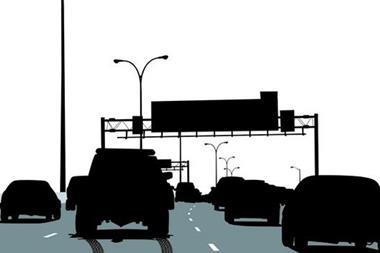Reduced cost of fitting new equipment prompts insurer to explore concept again

The evolution of telematics in the private car market took a giant leap forward this week when Direct Line revealed it is to carry out a pilot test.
The entrance of Direct Line, the Royal Bank of Scotland Insurance’s largest subsidiary, with £4.3bn in gross written premium, will increase pressure on rivals to test the technology.
Direct Line has launched the project with sister company and telematics provider Tracker.
The aim of the year-long pilot is to see what drivers want from telematics before designing a full proposition if the project goes well.
The insurer will hold public workshops later this year to hear customer views on telematics, and then open the pilot to Direct Line staff early next year before widening the scheme to customers that register an interest.
“Customers need to want it,” Direct Line director of motor underwriting and pricing Andy Goldby said. “We tried a soft pilot of a similar technology a number of years ago and the customers weren’t ready for it. People didn’t like Big Brother potentially watching you, they didn’t understand it, but a difference now is that the cost of fitting the box has come down.”
The pilot will be open to anyone, but Goldby expects a high percentage of its young driver employees to sign up.
Under the pilot, thousands of cars will be fitted with a telematics ‘black box’ supplied by Tracker.
“Telematics is the future,” said Deloitte insurance partner Ian Clark. “So the fact that a large insurer like RBSI, which owns Tracker, is getting in there, does not surprise me at all. It’s going to come across the industry at some stage.”
The boxes will be fitted by Direct Line’s accident repair centres and Tracker staff. They take less than an hour to fit.
Direct Line believes the box is cheaper and easier to install than earlier designs.
Aviva launched a consumer telematics trial in 2004 but pulled the project because of the high cost of installing the boxes, as well as
slow uptake by consumers and car manufacturers.
The ease of installation of the new equipment means that Direct Line will be exploring different ways of fitting the box in the pilot to see which works best.
“We expect to be exploring other installation channels alongside the standard, which is us going out and installing one-on-one,” Tracker technology and marketing director Clive Girling said.
The boxes will record a car’s location at a given time, as well as cornering, acceleration and braking.
Driving information will be sent back to Tracker’s servers. Tracker can then send it on to Direct Line as raw or processed information. The pilot would also explore the best way for Direct Line to receive this information for its underwriting.
Several other insurers have recently announced plans for telematics projects.
AA Insurance revealed details of its scheme for motor customers earlier this month, while BMW is in talks to build advanced telematics into its new cars from 2015.
Talking points …
● With the UK’s biggest personal lines insurer throwing its weight behind a telematics pilot, will this act as a catalyst for other insurers to unveil plans?
● Direct Line’s earlier experiments with telematics were cut due to the high cost of installing the box and a lack of customer enthusiasm. The cost of installation may be lower, but have customer attitudes changed?
● Telematics will give insurers much more data on how people drive, which will be used for underwriting. The amount of data will be so vast that insurers are likely to prioritise certain areas when deciding how risky a driver is - what will they choose?
Hosted by comedian and actor Tom Allen, 34 Gold, 23 Silver and 22 Bronze awards were handed out across an amazing 34 categories recognising brilliance and innovation right across the breadth of UK general insurance.













































No comments yet